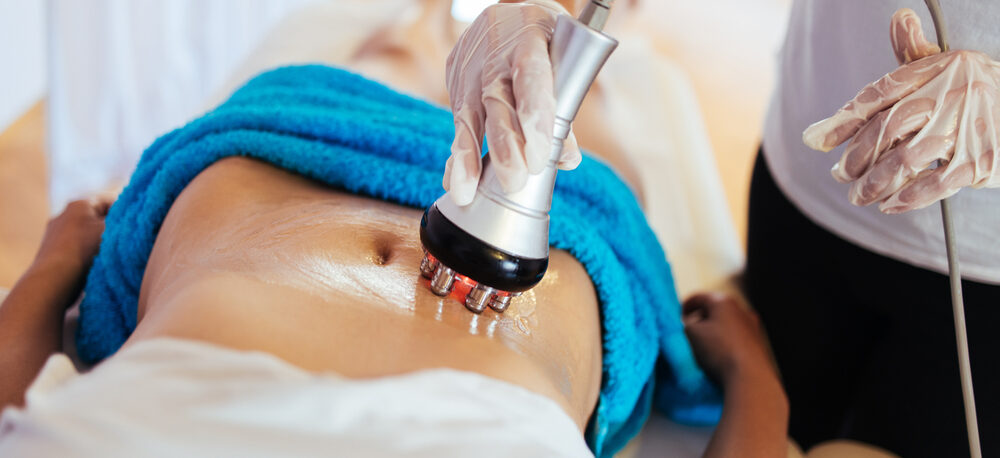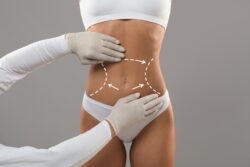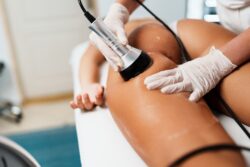
Liposuction Recovery: Comprehensive Guide to Healing & Care
Liposuction is a common cosmetic procedure that removes fat cells from specific areas of the body such as the stomach, hips, thighs, buttocks, and arms. If you’ve been eating right and exercising regularly but still have stubborn areas of fat, liposuction may be a good next step for you. However, it’s important to have a solid plan for your liposuction recovery before undergoing the procedure. In this guide, we will cover everything you need to know about the recovery process, including types of liposuction, timelines, and tips for a smooth healing journey.
What Happens During Liposuction?
What happens during liposuction depends on the type of procedure you choose. Generally, you will be sedated with general anesthesia. Then, your surgeon will begin removing fat cells from the areas marked prior to the procedure.

Types of Liposuction Procedures
The type of liposuction you undergo will impact your recovery time. Here are the most common types:
-
Tumescent Liposuction:
-
-
- This is the most common type of liposuction. The surgeon injects a saline solution, lidocaine (for pain relief), and epinephrine (to constrict blood vessels) into the treatment area, causing it to swell and stiffen. Small incisions are then made to remove fat using a tube connected to a vacuum.
-
-
Ultrasound-Assisted Liposuction (UAL):
-
-
- A metal rod emitting ultrasonic energy is inserted under the skin to break down fat cells, making removal easier. UAL is often combined with tumescent liposuction.
-
-
Laser-Assisted Liposuction (LAL):
-
-
- Intense laser light breaks down fat cells. Like UAL, LAL can be combined with tumescent liposuction.
-
-
Power-Assisted Liposuction (PAL):
-
- A vibrating tube rapidly removes fat. This method is ideal for large amounts of fat removal due to its speed and precision.
Liposuction Recovery Process, Timeline & Aftercare Tips
Immediate Post-Operative Period (1-3 Days)
- What to Expect: Soreness, swelling, bruising, and drainage from incisions.
- Care Tips:
- Rest as much as possible.
- Wear compression garments to reduce swelling and improve healing.
- Take prescribed pain medications and antibiotics as directed.
Short-Term Recovery (1-2 Weeks)
- What to Expect: Bruising and swelling begin to subside. Most patients can return to light activities or work.
- Care Tips:
- Continue wearing compression garments.
- Avoid strenuous activity but take light walks to improve circulation.
- Follow your surgeon’s instructions for cleaning incision sites.
Mid-Term Recovery (3-6 Weeks)
- What to Expect: Swelling continues to decrease, and initial results become visible. Moderate physical activities can be resumed.
- Care Tips:
- Follow your surgeon’s advice on exercise.
- Watch for any signs of complications, such as infection or excessive swelling.
Long-Term Recovery (3+ Months)
- What to Expect: Final results are typically visible as swelling subsides completely. The treated areas appear leaner and more contoured.
- Care Tips:
- Maintain a healthy diet and regular exercise to sustain results.
- Attend follow-up appointments with your surgeon.
Does Liposuction Leave Scars?
Yes, small scars may result from the incisions, but they are usually inconspicuous. Proper post-op care, such as keeping the incision sites clean and using recommended scar treatments, can make them even less noticeable over time.
Tips for a Smooth Liposuction Recovery
-
Eat Healthy and Stay Hydrated:
-
-
- Prioritize anti-inflammatory foods such as fatty fish, berries, tomatoes, and leafy greens.
- Drink plenty of fluids, especially water and tea, to stay hydrated.
-
-
Light Movement:
-
-
- Begin with light walks a few days post-surgery to avoid blood clots.
-
-
Follow Post-Op Instructions:
-
-
- Take medications as prescribed.
- Wear compression garments constantly unless otherwise directed.
- Keep incision sites clean to prevent infection.
-
-
Wear Comfortable Clothing:
-
-
- Opt for loose-fitting clothes that don’t irritate your skin.
-
-
Consider a Lymphatic Massage:
-
- This can help reduce swelling, release toxins, and promote faster healing.
What Not to Do During Recovery
-
Avoid Junk Food:
-
-
- Processed and high-sodium foods can cause inflammation and slow healing.
-
-
Avoid Strenuous Exercise:
-
-
- While light walking is encouraged, avoid intense workouts for at least 4-6 weeks.
-
-
Avoid Baths:
-
-
- Stick to showers to prevent infections from bacteria in bathwater.
-
-
Avoid Smoking and Alcohol:
-
- Smoking reduces blood flow and increases infection risk, while alcohol can dry out your skin and slow healing.
Potential Liposuction Complications
Even though liposuction is minimally invasive, it carries some risks, including:
- Excessive bleeding
- Infection
- Fat embolism
- Blood clots
- Uneven fat removal
- Changes in skin sensation
Contact your surgeon immediately if you experience signs of complications, such as excessive redness, swelling, or pain.
How Soon Will You See Results?
Most patients begin to see results within one to three months as swelling subsides. Final results depend on how well you follow post-op care instructions and maintain a healthy lifestyle.
Maintaining Liposuction Results
To keep your new body shape, maintain a balanced diet full of fruits, vegetables, lean proteins, and healthy fats. Regular exercise is also essential to prevent fat from returning to untreated areas.
Other Procedures to Combine with Liposuction Include:
- Chin reduction surgery
- Breast reduction
- Body contouring surgery
- Weight loss surgery
- Skin removal surgery
- Tummy tuck
- Arm lift
- Fat grafting
Knowing how long it takes to recover from liposuction and following proper aftercare can help you achieve optimal results. Each patient’s recovery journey is unique, so consult your surgeon for personalized guidance and support.
Are you ready to take the next step toward your ideal body shape? Contact us today to schedule a consultation and learn more about your options for liposuction.

